Government debt markets
Singapore
Size of market
The Government initiated the Singapore Government Securities (SGS) programme in 1987. Prior to this there was very little issuance of government securities, and no active secondary market for government securities existed. The Government primarily issued securities to meet the investment needs of Singapore's national pension scheme, and commercial banking sector liquidity requirements. As a result there was very little turnover in the market.
Over the first decade of the programme, the government bond market developed slowly with minimal increase in issuance size and turnover. However, in 1998 the Government implemented a number of reforms to enhance the bond market's efficiency and liquidity. This included increasing the issuance of SGS, especially longer-dated bonds. Since 1998, the SGS market has grown by an average rate of around 23 per cent per year. Outstanding SGS at June 2002 totalled S$53 billion (US$30 billion) (Chart 36).
[caption id="attachment_40119" align="aligncenter" width="492"]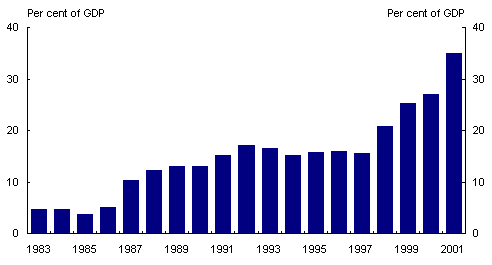 Chart 36: Singapore Government securities on issue[/caption]
Chart 36: Singapore Government securities on issue[/caption]
Source: CEIC Asia Database, 2002.
Motivation
The Singapore Government does not need to issue government bonds to finance its expenditures. The Government has operated substantial fiscal surpluses for many years and accumulated sizeable reserves. The government debt market therefore is maintained for reasons other than meeting the funding requirements of the government.
The principal objectives of developing the SGS market, as outlined by the Government, are to:
- provide a liquid investment alternative, with little or no risk of default,
for individual and institutional investors; - establish a liquid government bond market which serves as a benchmark for
the corporate debt securities market; and - encourage the development of skills relating to fixed income securities
and broaden the spectrum of financial services available in Singapore.
Institutional arrangements
Singapore's central bank, the Monetary Authority of Singapore, issues government securities on behalf of the Government.
All proceeds from the issuance of government securities are placed in the Government Securities Fund established by the Government Securities Act. The Fund is managed by the central bank.
The Government Securities Act and the Financial Procedure Act outline the instruments in which funds held in the Government Securities Fund can be invested. Funds can be invested in any stocks, funds or securities authorised for the investment of trust funds, or in securities issued or guaranteed by any government or international financial institution except those issued by the Government of Singapore. Funds also may be invested in gold and other bullion, or held on deposit in any bank.
Hong Kong
Size of market
The Hong Kong Government began issuing debt in 1990, with the introduction of the Exchange Fund Bills and Notes programme. Exchange Fund Bills and Notes are Hong Kong dollar debt securities issued by the central bank. They constitute direct obligations of the Hong Kong Government.
After the programme was introduced, the total size of the government securities market in Hong Kong increased by an average of around 30 per cent per year. At June 2002, HK$115.7 billion (US$15 billion) of government securities were on issue (Chart 37).
[caption id="attachment_40120" align="aligncenter" width="492"]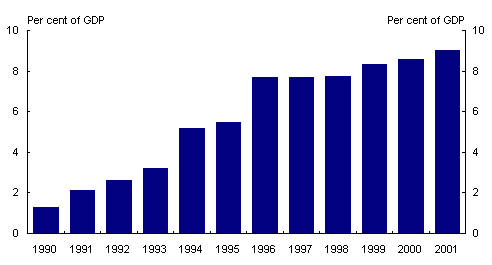 Chart 37: Hong Kong Government securities on issue[/caption]
Chart 37: Hong Kong Government securities on issue[/caption]
Source: CEIC Asia Database, 2002.
Motivation
The Hong Kong Government established the Exchange Fund Bills and Notes programme with the objective of maintaining monetary and financial system stability. The programme is also aimed at promoting the development of the domestic bond market more generally. The Government considers the development of the domestic bond market to be an important factor in the continued promotion of Hong Kong as an international financial centre.
The Government does not need to issue government securities to finance its expenditures. Prior to the onset of the Asian financial crisis, the Government had recorded large and consistent budget surpluses, resulting in the accumulation of large financial reserves. In 1998, these reserves totalled around HK$460 billion (US$60 billion) or 34 per cent of GDP. While the government recently has run budget deficits, it has largely financed them by drawing on these fiscal reserves.
Institutional arrangements
Proceeds from the sale of government debt instruments are held in the Exchange Fund. The Fund, established in 1935 under the Exchange Fund Ordinance, currently holds most of the Government's financial assets. The Financial Secretary controls the Fund and may use it to maintain monetary and financial system stability and integrity, with a view to maintaining Hong Kong's position as a key Asian international financial centre.
The Fund's day-to-day management is delegated to the Hong Kong Monetary Authority, which functions as the central bank of Hong Kong. The Monetary Authority directly manages part of the Fund, but has delegated the management of 30 per cent of total assets to external fund managers. Externally managed portfolios are subject to the same guidelines as internally managed portfolios.
The Fund is mainly held in assets denominated in US dollar and other OECD currencies. The current asset allocation strategy indicates that 80 per cent of assets are to be held in bonds, with 20 per cent invested in equities. Equity investment guidelines limit investments in domestic equities to 5 per cent of the total asset portfolio. This strategy is reviewed annually in light of changes in the volatility of financial markets.
United States
Size of market
Prior to the recent turnaround in the US fiscal position, there had been significant reductions in the amount of publicly held Treasury securities. Projections indicated that the market could be virtually eliminated by 2013. The large reductions in publicly held debt were made possible by large consecutive fiscal surpluses. Debt held by the public fell from around 50 per cent of GDP in 1993 to 33 per cent in 2001. Current projections now indicate that publicly held debt will fall to around 15 per cent by 2012 (Congressional Budget Office, 2002).
While the size of the US Treasury market has declined, private sector debt markets have expanded. Total debt outstanding in the corporate and agency debt markets totalled almost US$6,000 billion or around 60 per cent of GDP at the end of 2001.
The corporate debt market grew considerably from 1996 to 2001, with debt outstanding increasing by 10 per cent of GDP (Chart 38). This compares to relatively slow growth between 1990 and 1995. The agency debt market has grown by an average of 20 per cent per year since 1998. Agency securities constitute obligations of government-sponsored enterprises, which operate under federal charter.
[caption id="attachment_40121" align="aligncenter" width="492"]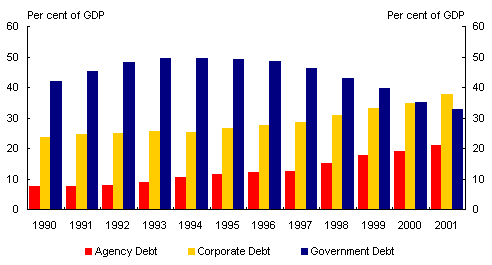 Chart 38: US government, corporate and agency securities on issue(a)[/caption]
Chart 38: US government, corporate and agency securities on issue(a)[/caption]
(a) Government debt refers to government debt held by the public.
Source: The Bond Market Association, 2002; Organisation of Economic Cooperation and Development, 2002b.
Motivation
The Government issues Treasury securities to meet its fiscal funding requirements, and has adopted a policy of retiring debt, as budget proceeds become available.
The reduction in publicly held Treasury securities, has raised concerns among some market participants, because of the traditional role these securities have played in financial markets. The Treasury securities market has served as a pricing and hedging benchmark for financial markets, reflecting the minimal credit risk and high liquidity of the Treasury market.
While the International Monetary Fund and the US Federal Reserve have acknowledged the role US Treasury securities play in the financial market, they consider private sector alternatives exist that could fill this role. Indeed, several markets already have assumed a limited benchmark role for risk management, monitoring and analytical purposes. These markets include the corporate debt, the agency debt and interest rate swap markets.
The corporate debt market has responded to the declining market for Treasury securities by increasing issuance sizes and regularity to appeal to investor demand. Some large corporate borrowers have moved to position themselves as benchmark issuers. In 1998, Ford Motor Credit and the General Motors Acceptance Corporation, two US finance companies with single-A credit ratings, announced billion dollar issues with an expressed intention to create international benchmarks.
Despite sound growth in the corporate debt market, some commentators suggest its potential as a benchmark may be limited by its fragmented nature, lack of infrastructure and supporting markets, and potential credit risk and firm-specific factors. Currently, corporate debt primarily is used as a benchmark to monitor the performance of the market, evaluate other outstanding corporate debt securities and assist in pricing of new corporate debt issues. Hedging activity using corporate issues is limited.
The agency debt market also serves a benchmark role for hedging and pricing purposes. In response to the declining supply of Treasury securities, some agencies have introduced their own benchmark debt issuance programs, modelled on the issuance practices of Treasury securities.
The US interest rate swap market serves a benchmark role for hedging positions taken in other markets. The high level of correlation between changes in the interest rate on swaps and other debt instruments makes swaps a useful hedging instrument. Swaps also have been used to price new issues of debt securities.
The recent turnaround in the US fiscal position and subsequent increase in debt issuance over the medium-term, means that the Government may not have to decide on the future of the Treasury securities market for some time.
Republic of Korea
Size of market
The Korean Government bond market has undergone significant transformation since the Asian financial crisis. Before 1997, the government bond market was relatively underdeveloped, with outstanding government bonds on issue comprising around 6½ per cent of GDP, significantly lower than that of most other industrialised countries.
The small government bond market reflected the Government's strong fiscal position. However, in 1998, the fiscal position changed significantly as a result of the financial crisis. The emergence of large budget deficits, financed largely through the issuance of Treasury bonds, has increased substantially the amount of bonds on issue. By 2001, the government bond market had expanded to around 15 per cent of GDP (Chart 39).
[caption id="attachment_40122" align="aligncenter" width="492"]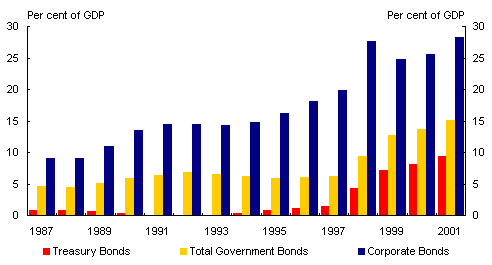 Chart 39: Korean government and corporate securities on issue(a)[/caption]
Chart 39: Korean government and corporate securities on issue(a)[/caption]
(a) Total Government bonds comprise of Treasury Bonds, Foreign Exchange Stabilisation Bonds, National Housing Bonds and Grain Securities.
Source: Korea National Statistics Office, 2002.
The limited supply of government bonds has meant that corporate bonds have dominated the Korean bond market. Prior to the financial crisis government bonds did not serve a benchmark role due mainly to limited issuance. Instead market participants used three-year corporate bonds as benchmark instruments of debt, reflecting the relative size and liquidity of the bond markets.
Motivation
Some market participants have considered the lack of a well-established debt market to be a major contributing cause of the financial crisis. It was believed that the lack of development in the domestic bond market may have resulted in heavy reliance on bank borrowing, and reduced capacity to evaluate credit risk.
The Government has stated that the development of the government bond market is an important factor in developing the domestic bond market as a whole. Consequently, the Government has adopted several measures to make government bonds a reliable benchmark. The Government has promoted three-year Treasury bonds as the benchmark debt instrument. In particular, it has allocated over half the total issuing volume to the three-year bond in order to raise liquidity of the issue. Furthermore, it plans to extend benchmarks to a longer maturity and establish a benchmark yield curve over a reasonable range of maturities.
Managing Government asset portfolios
New Zealand
Size of asset portfolio
The New Zealand Government maintains a number of financial asset portfolios. These portfolios are expected to total around NZ$25 billion (US$12 billion) at end June 2002, and increase to around NZ$40 billion (US$20 billion) by 2006.
The expected growth in the Government's total financial assets is primarily due to the recent establishment of the New Zealand Superannuation (NZS) Fund. Assets in the NZS Fund are expected to increase from their current size of $600 million (US$260 million), to around $9 billion (US$4 billion) by 2006.
Chart 40 shows the growth in the NZS Fund and other Government financial asset funds, established for the purposes of meeting specific government obligations.
[caption id="attachment_40123" align="aligncenter" width="492"]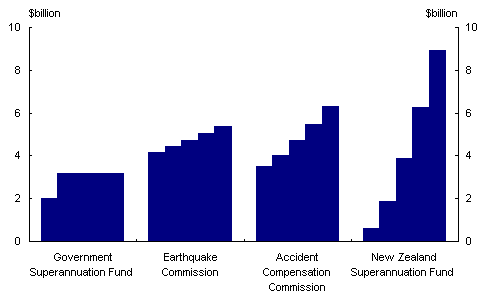 Chart 40: New Zealand Government asset portfolios: 2002 to 2006(a)[/caption]
Chart 40: New Zealand Government asset portfolios: 2002 to 2006(a)[/caption]
(a) A number of other substantial asset portfolios are held by the Government, including assets held by the Reserve Bank of New Zealand, and the New Zealand Debt Management Office.
Source: New Zealand Treasury, 2002.
Motivation
The NZS Fund was established to smooth the rising fiscal costs of the Government's universal pension system stemming from the ageing of the population. Under current pension arrangements, annual pension payments are expected to rise from their current levels of about 4 per cent of GDP to around 9 per cent of GDP over the next fifty years. Although exacerbated slightly by the `baby boomer' generation, this increase is primarily due to the permanent effects of increasing longevity and declining fertility.
The Government's intention to pre-fund its future pension liabilities will require it to make capital contributions to the fund starting at around 2 per cent of GDP each year and steadily winding down to zero by the mid 2020s as the annual cost of NZS rises. To ensure the Government meets these obligations, it has put in place a long-term fiscal strategy aimed at achieving an operating balance, on average over the economic cycle, sufficient to meet the requirements for contributions to the NZS Fund.
Other NZ government funds have been established to meet specific government obligations. The Accident Compensation Corporation and the Earthquake Commission have been established to meet insurance liabilities associated with national insurance schemes. The Government Superannuation Fund is a defined benefit superannuation scheme for public servants, which was closed to new members in the early 1990s.
Institutional arrangements
The NZS Fund will operate independently of the Government and is to be managed by a Crown entity board, appointed through an independent nominating committee process. The New Zealand Superannuation Act sets out the investment objectives of the NZS Fund. The Act stipulates that the Fund must be invested on a prudent commercial basis, in a manner consistent with best-practice portfolio management, and aim for maximum returns without taking undue risk. Moreover, the fund must not operate or invest in a way that is damaging to the nation's reputation.
The Board will establish the Fund's investment strategy independently of Ministers. While Ministers are free to make their expectations as to the Fund's performance known to the Board, and the Board must have regard to that, the Board's over-riding responsibility is to invest the Fund on a prudent, commercial basis.
To further address some of the governance issues associated with the management of government owned asset portfolios, the New Zealand Superannuation Act requires that the Fund avoid taking a controlling interest in any other entity. In addition, there are reasonably extensive accountability and reporting requirements, including publication of the Fund's statement of investment policies, standards and procedures.
The Board of the Fund has only recently met for the first time and has yet to establish its investment strategy. As a result it is not yet clear what asset composition and management strategy the NZS Fund will adopt. However, it is reasonable to expect that it will pursue a diversified portfolio across international capital markets.
The Government's asset portfolios may be managed actively or passively. However, the choice of active or passive equity management is heavily influenced by the taxation status of the fund. A passive investment strategy can have advantages under the New Zealand taxation system. The NZS Fund will be subject to domestic taxation arrangements and therefore might face incentives to implement a passive equity investment strategy.
Norway
Size of asset portfolio
The Norwegian Government Petroleum Fund was established in 1990 to manage the large government surpluses that resulted from petroleum revenues. The Petroleum Fund's income consists of the central Government's net cash flow from petroleum activities and return on the Fund's capital. At the end of 2001, the Fund held assets totalling NOK 613 billion (around US$80 billion) or 42 per cent of GDP (Chart 41).
[caption id="attachment_40124" align="aligncenter" width="492"]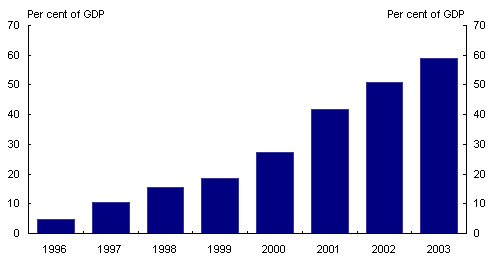 Chart 41: Accumulated assets in the Government Petroleum Fund(a[/caption]
Chart 41: Accumulated assets in the Government Petroleum Fund(a[/caption]
(a) Data for 2002 and 2003 are projections.
Source: Norges Bank, 2001; Ministry of Finance estimates.
Motivation
The Petroleum Fund provides a mechanism to assist with long-term fiscal challenges. Norway faces increased pension expenditure as its population ages, at a time when petroleum revenues are expected to decline. These two trends may place significant pressure on government finances in the long-run. The Petroleum Fund seeks to address both these concerns, by smoothing the use of petroleum revenues over time, and providing an instrument for meeting the long-term increases in pension expenditure.
The Petroleum Fund is an integrated part of the Government's finances. Government guidelines for its fiscal strategy state that the structural, non-oil budget deficit should correspond to the expected real return on the Petroleum Fund at the beginning of the fiscal year. This strategy implies a gradual increase in the use of Petroleum Fund revenues to finance the budget deficit over the medium-term, without depleting the Fund's assets.
Further, the Government can draw on petroleum revenues during periods of slower economic activity. During a recession in the early 1990s, large government budget deficits were funded from petroleum revenues, and the Government did not make any transfers to the Petroleum Fund.
Institutional arrangements
The responsibility for operation of the Government Petroleum Fund has been delegated to the central bank of Norway. The investment strategy of the Fund, is to invest capital in a way that maximises the Fund's international purchasing power, taking into account an acceptable level of risk.
The Fund is invested entirely in foreign financial assets as regulations prohibit it from investing in the domestic market. This is intended to prevent the Fund from becoming a supplementary source of financing government expenditures, and to avoid distorting the domestic economy.
The Fund's asset allocation is set at 60 per cent bonds and 40 per cent equities. To avoid some of the governance issues that arise when governments hold equity in private companies, regulations stipulate that the Fund's investments must not exceed 3 per cent of the voting shares or share capital in any one company. In addition, the central bank may only exercise the voting rights, associated with its shareholdings, if it is necessary to secure the financial interests of the fund.
Initially, the Fund's equity management was almost entirely conducted by external fund managers. These funds were passively managed, that is funds were invested with reference to stock exchange indices. In 1998, the Government allowed external fund managers to actively invest the Fund's assets.
The composition of Fund management has changed significantly since the Fund's inception. In 2001, the central bank took over the management of a large number of external index managed portfolios, and now manages 57 per cent of total Fund assets both actively and passively.
In 2001, an Environmental Fund was established with NOK 2 billion of capital holdings to invest in shares of companies which satisfy certain environmental criteria, or which have little negative influence on the environment. This Fund's performance will be evaluated after three years to determine whether the ethical investments affect overall Fund performance.
Canada
Size of asset portfolio
The Canadian Government established the Canadian Pension Plan (CPP) in 1966, to provide all working Canadians with retirement income. The Federal and Provincial Governments jointly manage the CPP, however, it does not form part of general government revenue or expenditure and therefore does not directly affect government budget positions.
In June 2002 the CPP held assets totalling C$56 billion (US$35 billion). Of these assets, around 31 per cent were managed by an investment board and invested in equities with a view to securing maximum returns without undue risk of loss. The CPP holds the remaining assets in fixed-income securities consisting of federal and provincial bonds and an interest-bearing cash reserve (Chart 42).
[caption id="attachment_40125" align="aligncenter" width="492"]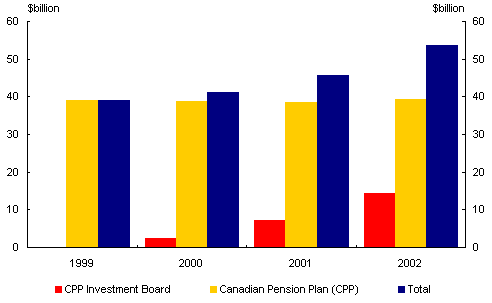 Chart 42: Canadian Pension Plan asset holdings[/caption]
Chart 42: Canadian Pension Plan asset holdings[/caption]
Source: Canadian Pension Plan various years; Canadian Pension Plan Investment Board various years.
Motivation
The CPP was initially established as a pay-as-you-go plan, where benefits paid to each generation of current retirees were financed from the contributions of the following generation. However, in 1996 the Government realised that the CPP had insufficient assets to meet its long-term obligations. Consequently, the Government agreed to increase contribution rates to levels that would generate funds in excess of those required to pay current entitlements. That is, the system moved to partial funding. It is anticipated that the CPP will be 20 per cent funded by 2017.
Institutional arrangements
The Government established the Canadian Pension Plan Investment Board to invest excess funds in the CPP which are not currently required to meet pension payments. The Board is an independent investment corporation, operating at arms length from governments.
The Canadian Pension Plan Investment Board Act requires the Board to invest in assets with a view to achieving a maximum rate of return without undue risk of loss. The Board can invest in any asset they think is appropriate, including equities, bonds and real estate. So far, it has invested almost entirely in equites, to balance the large fixed-income portfolio held by the CPP.
The CPP Investment Board may invest in both domestic and international assets, however, its foreign asset holdings are restricted to 30 per cent of the total portfolio. This restriction applies to most retirement saving or pension plans in Canada.
Initially, investments in Canadian equities could only be conducted passively, that is through stock index funds that replicated established stock exchange indices. This restriction was removed in 2001. The Investment Board now has full discretion over its investment policy.
The Government tabled legislation in Parliament in June 2002 that proposes the transfer of the CPP assets currently managed by the Government to the CPP Investment Board, consolidating the investment management of all CPP assets in the one organisation. The transfer will be phased-in over three years.
Ireland
Size of market
The National Pensions Reserve Fund was established in 2001, and held assets totalling Euro 7.7 billion (US$7.5 billion) at December 2001 (Chart 43). It is expected that the Fund will grow to Euro 40 billion by 2025.
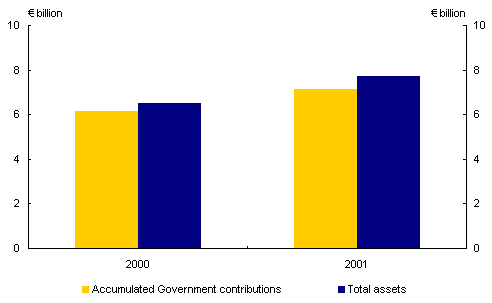
Source: National Pension Reserve Fund Commission, 2001.
Motivation
The National Pensions Reserve Fund was established to meet part of the increasing costs of government social welfare pensions and public service pensions arising from the projected ageing of the population. The Government estimates the annual cost of public pensions will increase by around 8 per cent of gross national product (GNP) by 2056.
In order to pre-fund part of the future cost of pension expenditures, the Government is required to make contributions to the Fund equal to 1 per cent of GNP each year up to 2055.
The Government is restricted from withdrawing any assets from the Fund before 2025. Thereafter, withdrawals must be for the specific purpose of meeting social welfare or public service pension expenditures. Further, withdrawals from the Fund in any year are limited to the total government expenditure on pensions in that year.
Institutional arrangements
The National Pensions Reserve Fund Commission is responsible for the control, management and investment of the Fund's assets. The Commission has appointed the National Treasury Management Agency as manager of the Fund, to act as agent of the Commission.
The National Pensions Reserve Fund Act outlines the broad investment strategy of the Fund. The Act states that the Fund shall invest in a manner that secures the optimal total financial return, having regard to both capital and income, subject to an acceptable level of risk.
The Fund can invest in all asset classes except Irish Government securities. The Commission has determined, that given the long-term nature of the Fund's liabilities, the broad asset allocation should be 80 per cent equities, and 20 per cent bonds. Equity investments are to be evenly distributed between Euro and non-Euro investments. All bond holdings will be Euro denominated.
To avoid some of the governance issues that may arise as a result of the Government's equity holdings, the Fund is prohibited from taking a controlling interest in any one company.
While the National Treasury Management Agency has the authority to manage the Government's asset portfolio, it has outsourced the majority of investment activities to external fund managers, and only manages a small Euro bond portfolio. Around half the Fund's asset portfolios are actively managed.